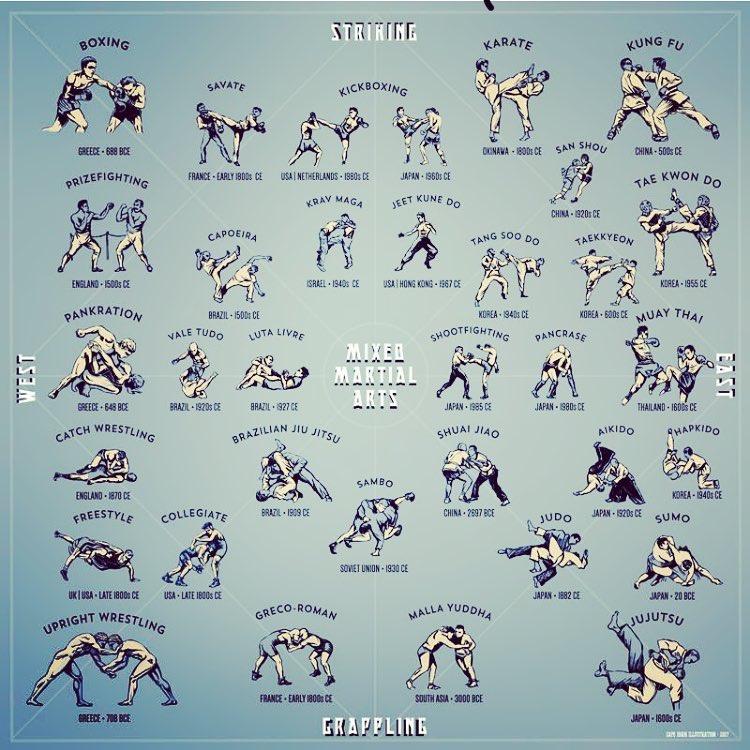The Background And Development Of Martial Arts: From Its Old Roots To The Techniques Practiced Today
The Background And Development Of Martial Arts: From Its Old Roots To The Techniques Practiced Today
Blog Article
Write-Up Writer-Bonner Frye
Step into the globe of martial arts, where old origins and modern techniques clash in a thrilling trip of self-control and self-discovery.
As you explore the background and development of this fascinating art form, prepare to be astounded by the social impacts, technical advancements, and profound philosophy that have shaped it over centuries.
From the battlefields of ancient people to the training grounds of today, martial arts have stood the test of time, constantly adapting and expanding.
Each strike, each movement, brings with it the weight of many years of tradition and knowledge, passed down with generations. This is a tale of strength, of warriors who sought not only physical prowess, yet additionally inner strength and harmony.
Join us on this impressive exploration as we reveal the keys, the tales, and the transformational power of martial arts.
Prepare to be motivated, tested, and for https://armoneyandpolitics.com/martial-arts-new-leader/ altered by the history and development of martial arts.
Social Impacts on Martial Arts
As you discover the history and advancement of martial arts, you'll quickly uncover the remarkable ways in which social impacts have formed these fight strategies.
From https://consofteachingkidsmartial10987.kylieblog.com/30354376/martial-arts-vs-various-other-sports-why-it-s-a-suitable-choice-for-kids of China and India to the a lot more current developments in Japan and Brazil, martial arts have been greatly affected by the societies in which they came from.
As an example, Chinese martial arts, such as Kung Fu and Tai Chi, are deeply rooted in the ideology of Taoism and the idea of Yin and Yang.
On the other hand, Japanese martial arts, like Karate and Judo, reflect the samurai warrior traditions and the values of discipline and honor.
Similarly, Brazilian fighting style, Capoeira, integrates elements of African dance and songs, mirroring the social heritage of African slaves in Brazil.
These cultural influences not only provide each fighting style its one-of-a-kind features however likewise supply a deeper understanding of the historical and social contexts in which they evolved.
Technological Advancements and Martial Arts
With the rise of advanced weapons and cutting-edge training tools, you've been able to enhance your skills and adapt to the ever-changing fight landscape.
Technical developments have revolutionized the method martial arts are practiced and shown. Virtual reality simulations now permit you to train in practical fight situations without the risk of physical damage. High-speed electronic cameras capture every action, allowing you to evaluate and perfect your strategies. Wearable gadgets check your heart rate, breathing, and muscular tissue activation, supplying immediate feedback on your performance.
Furthermore, https://besttypeofmartialartsfors16059.bleepblogs.com/30370661/checking-out-the-differences-between-martial-arts-and-self-defense-a-comprehensive-summary of customized devices, such as resistance bands and agility ladders, has actually enabled you to boost your speed, strength, and dexterity. These technical improvements have not just made training extra effective but have actually likewise pressed the borders of what is feasible in martial arts, allowing you to get to new heights in your practice.
The Philosophy and Concepts of Martial Arts
The ideology and concepts of martial arts are deeply rooted fit your frame of mind and instilling technique, emphasis, and respect in your practice.
1. Frame of mind: Martial Arts shows you to create a strong and durable way of thinking. It allows you to conquer challenges both on and off the floor covering, pushing your limits and being determined in the face of adversity.
2. Self-control: Martial Arts needs self-control and self-discipline. With regular training and adherence to stringent regulations and techniques, you find out to control your impulses and establish a solid job ethic.
3. Emphasis: Martial Arts needs extreme emphasis and focus. By training your mind to be existing in the moment, you improve your ability to react swiftly and effectively during fight situations.
4. Regard: Martial Arts emphasizes regard for oneself, instructors, educating companions, and opponents. It teaches you to value the abilities and experiences of others, promoting a feeling of camaraderie and sportsmanship.
Verdict
Congratulations on finishing your trip through the fascinating globe of martial arts! Throughout this expedition, you have witnessed the abundant history and amazing advancement of these fight methods.
From their old origins to the modern techniques we see today, martial arts have actually been shaped by cultural influences.
The assimilation of technology has additionally played a considerable duty in revolutionizing the means martial arts are instructed and practiced in the here and now day.
Nevertheless, it is necessary to keep in mind that martial arts are more than just physical battle. They include profound approaches and guiding concepts that exceed the plain act of battling.
Take a moment to assess this obsolete adventure and value just how the heritage of martial arts remains to grow in today, going beyond time and borders.
